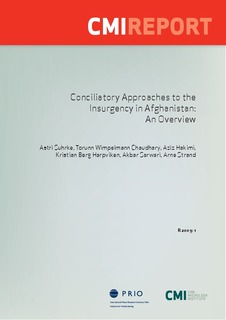Conciliatory approches to the insurgency in Afghanistan: An overview
Suhrke, Astri; Chaudhary, Torunn Wimpelmann; Hakimi, Aziz; Harpviken, Kristian Berg; Sarwari, Akbar; Strand, Arne
Research report
Permanent lenke
http://hdl.handle.net/11250/2436063Utgivelsesdato
2009Metadata
Vis full innførselSamlinger
- Bora-import [434]
Sammendrag
This report is a preliminary mapping of initiatives designed to promote peace and reconciliation in Afghanistan. It is a snapshot in time, focusing on practices or arrangements that were still ongoing during the second half of 2008, or had recently been undertaken and stored, as it were, in the public inventory of conflict mitigating and peacebuilding measures.
The report focuses on initiatives related to the insurgency mounted by Taliban soon after they were driven from power by the US and the Northern Alliance forces in late 2001. The insurgency steadily gained strength after 2004 and, while most strongly entrenched in the east and the south, by the end of 2008 the insurgents had moved closer to Kabul. They posed a serious threat to the authority of the government, were a growing source of regional tension, particularly in relation to Pakistan, and challenged the very credibility of NATO, which failed to get the military upper hand despite increasing force deployment. By the end of 2008, the international force level in Afghanistan had reached 79 000. With scheduled additions of US troops in 2009, it would rise to around 100 000, approximating the size of the Soviet contingent before Kremlin started the withdrawal in 1989.
Utgiver
Chr. Michelsen InstituteSerie
Research reportR 2009: 1
